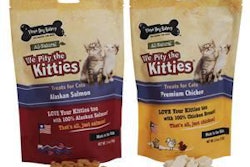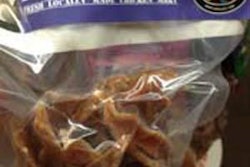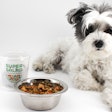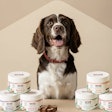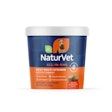Petfood marketers have realized over the years that consumers are not just looking for cute pictures when shopping for food for their pets, but they are shopping for petfood just as they would food for themselves. As a result, a few key trends can be seen in marketing for human foods and marketing for petfoods.
An article from Packaging Digest points to five similarities that can be found in packaging and marketing of both human and petfoods: nutritional tables, photography and food styling, brand stories, on-packaging language and imagery.
1. Nutritional tables/food pyramids
Consumers are more educated now about their own food and petfood, as issues like obesity and allergies affect both humans and pets. Companies are featuring nutritional tables and food pyramids prominently on packaging to let consumers know what vitamins and nutrients are in the food.
2. Better photography/food styling
Instead of photos of people and pets, food packaging is focused on the actual food. "Photography styling is less propped and more real, with food appearing the way you'd see it in real life-scattered across a table, as opposed to perfectly (and fakely) sitting in a bowl. The goal: for consumers to think, 'That looks good, that looks tasty, that looks healthy' in the same way they do when they see something appetizing for themselves," the article says.
3. Brand story
The premium and human food trend is also carrying over into petfood. Consumers are more inclined to purchase something they feel is made by a small company, asking "Where does it come from? How is it made?" In response, petfood companies are putting their stories on the packaging to make their brand's purpose clear.
4. "No" language
Consumers are selecting foods that contain and don't contain ingredients similar to those in their own foods. So, companies are putting phrases like "no wheat" and "no artificial preservatives" on the packaging.
5. Animal nature
Petfood packaging illustrations are showing animals in the wild to convey the message that animals are eating what they instinctually would hunt in the wild. This trend of marketing "limited-ingredient diet" foods shows companies are recognizing the physiology of pets as animals and providing high-protein foods.
The article also notes that pet treat packaging has changed over recent years, as well. Treat packaging is now emphasizing the ingredients and link to a specific health benefit, rather than just good taste.



